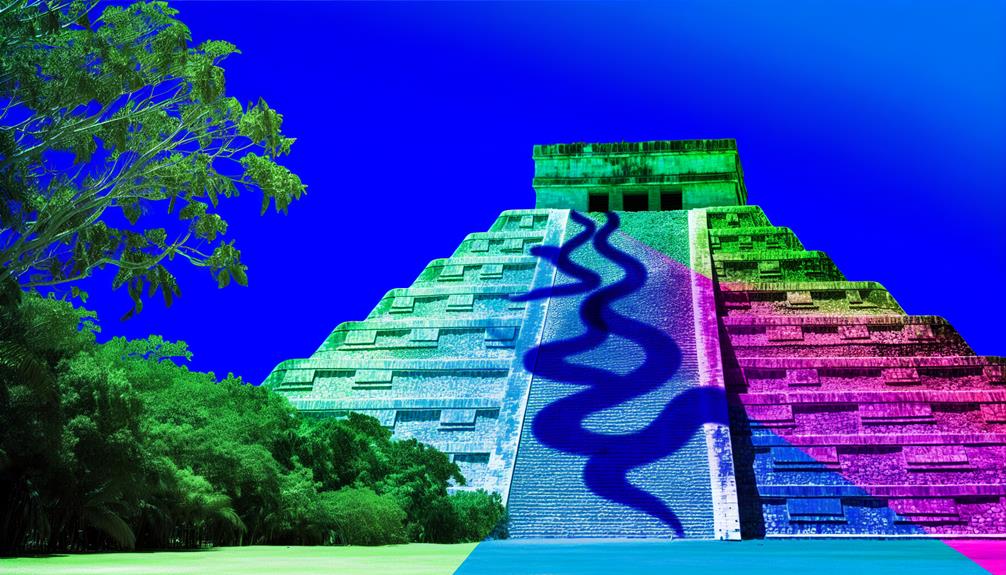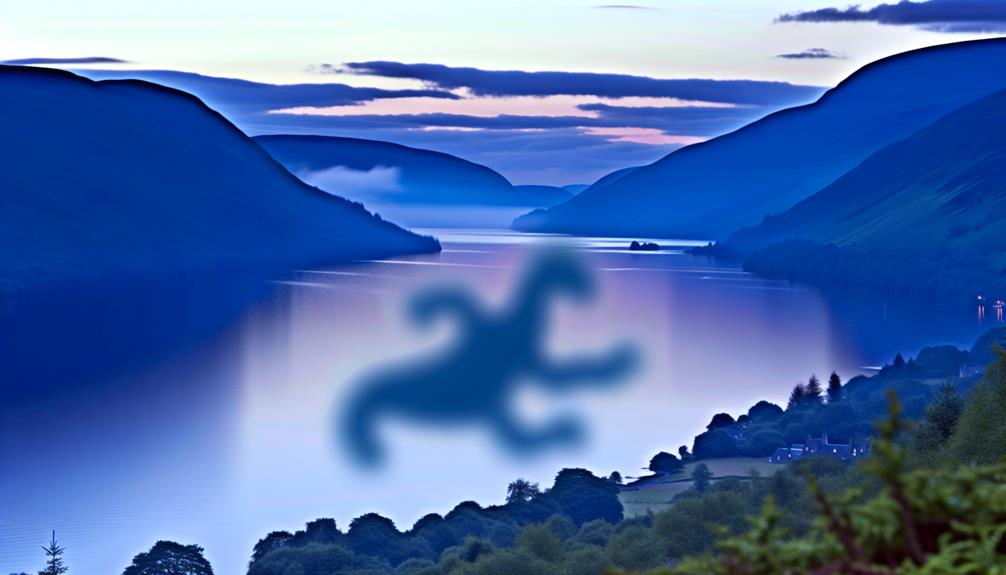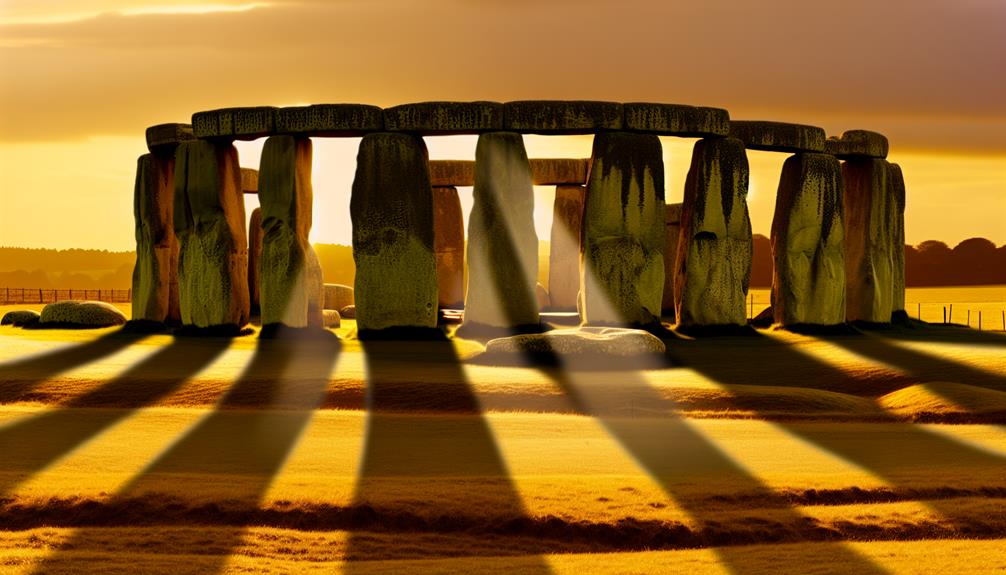Chichen Itza, situated in Mexico, epitomizes the ingenuity and cultural depth of the ancient Mayan civilization. Its intricate structures and architectural marvels offer a glimpse into a bygone era where science, spirituality, and art converged seamlessly. The allure of Chichen Itza lies not only in its physical grandeur but also in the mysteries and stories that whisper through its stone walls. As visitors wander through this historical site, they are beckoned to unravel the secrets that Chichen Itza holds, inviting them to explore a world where the past is palpable and the wonders are endless.
Key Takeaways
- Chichen Itza is a significant Mayan archaeological site in Mexico.
- The structures showcase Mayan architecture, astronomy, and mathematics.
- El Castillo aligns with the sun during equinoxes, creating a serpent shadow.
- Visiting early or late, packing essentials, and hiring a guide enhance the experience.
- Preservation by the local community and UNESCO recognition emphasize cultural importance.
History of Chichen Itza
Chichen Itza's historical significance as a prominent pre-Columbian archaeological site in Mexico unfolds a complex narrative of ancient Mayan civilization's architectural and cultural achievements. The site, located on the Yucatan Peninsula, was a thriving city in the Mayan world between the 7th and 10th centuries AD. The Mayan civilization, known for its advanced knowledge of mathematics, astronomy, and architecture, left a lasting legacy at Chichen Itza.
Archaeological discoveries at Chichen Itza have provided valuable insights into the religious, political, and social practices of the Mayan people. The site features impressive structures such as the Temple of Kukulcan, also known as El Castillo, a pyramid that served as a temple to the feathered serpent god. This architectural marvel showcases the Mayan's sophisticated understanding of astronomy, with its design aligning with the movements of the sun to create a shadow that resembles a serpent descending the steps during the spring and autumn equinoxes.
Chichen Itza's Ball Court is another significant structure that sheds light on the Mayan civilization's sporting and ceremonial activities. The carvings and reliefs found throughout the site depict scenes of rituals, battles, and sacrifices, offering a glimpse into the religious beliefs and practices of the ancient Mayans. Through ongoing archaeological research and preservation efforts, Chichen Itza continues to captivate visitors with its rich history and architectural wonders.
Architectural Wonders
Evidencing the mastery of ancient Mayan craftsmanship and ingenuity, the architectural wonders of Chichen Itza stand as proof of a civilization deeply rooted in mathematical precision and celestial alignment. These Mayan ruins, designated as a UNESCO World Heritage site, feature structures that continue to captivate visitors with their grandeur and sophisticated design.
One of the most iconic architectural marvels at Chichen Itza is the Temple of Kukulcan, also known as El Castillo. This step-pyramid showcases the Mayan's profound understanding of astronomy and mathematics. During the spring and fall equinoxes, the play of light and shadow on the pyramid creates an illusion of a serpent descending down the steps, symbolizing the feathered serpent god Kukulcan.
The Observatory, known as El Caracol due to its spiral staircase, is another remarkable structure at Chichen Itza. This circular tower served as an astronomical observatory, highlighting the Mayan's advanced knowledge of the stars and celestial movements. The precision with which the observatory was aligned with certain astronomical events is a reflection of the Mayan's expertise in studying the heavens.
Chichen Itza's architectural wonders not only showcase the Mayan's engineering prowess but also reflect their deep spiritual beliefs and connection to the cosmos. Visiting this UNESCO site offers a glimpse into the ancient Mayan civilization's architectural achievements and their profound relationship with the natural world.
Significance of El Castillo
The architectural masterpiece known as El Castillo at Chichen Itza embodies the intricate fusion of Mayan cosmology and architectural precision. This iconic pyramid serves as a demonstration of the advanced knowledge and ingenuity of the ancient Mayan civilization. One of the most intriguing aspects of El Castillo is its astronomical alignment, particularly during the spring and autumn equinoxes. During these times, the positioning of the sun creates a shadow that resembles a serpent slithering down the steps of the pyramid, symbolizing the feathered serpent god Kukulkan. This phenomenon is believed to have been intentionally designed to coincide with Mayan rituals and ceremonies, highlighting the close relationship between architecture, astronomy, and spirituality in Mayan culture.
The precision with which El Castillo was constructed further emphasizes its significance. The pyramid's four sides align with the cardinal directions, showcasing the Mayan's advanced understanding of geometry and celestial movements. The steps of the pyramid also correspond to the 18 months of the Mayan calendar, further solidifying its role as a ceremonial and astronomical center. Through its intricate design and alignment with celestial events, El Castillo stands as a remarkable illustration of the cultural and scientific achievements of the Mayan civilization.
Cultural Importance
Highlighting the enduring legacy of El Castillo at Chichen Itza, the cultural significance of this iconic pyramid extends far beyond its architectural marvels to encompass profound insights into the spiritual beliefs and societal practices of the ancient Mayan civilization. The preservation of Chichen Itza by the local community showcases a deep-rooted commitment to safeguarding their cultural heritage for future generations. UNESCO's recognition of Chichen Itza as a World Heritage Site further underscores the site's importance in global history and culture. However, the influx of tourists has brought both benefits and challenges to the preservation efforts and local community.
To better understand the cultural importance of Chichen Itza, let's explore the table below:
| Aspect | Description | Importance |
|---|---|---|
| Cultural Preservation | Involves efforts to safeguard traditional practices, beliefs, and artifacts | Essential for heritage |
| Community Involvement | Local engagement in preserving and promoting cultural heritage | Ensures sustainability |
| UNESCO Recognition | Acknowledgment of cultural significance on a global scale | Highlights historical value |
| Tourism Impact | Influence of visitors on site conservation and local economy | Balancing benefits and risks |
| Spiritual Insights | Deep understanding of Mayan beliefs and practices through architecture | Connects past and present |
Through cultural preservation and community engagement, Chichen Itza continues to provide valuable insights into the rich cultural tapestry of the Mayan civilization while balancing the impacts of tourism for a sustainable future.
Tips for Visiting
When planning a visit to Chichen Itza, it is important to consider several practical tips to enhance your experience at this renowned archaeological site in Mexico. To start with, packing essentials such as comfortable walking shoes, sunscreen, a hat, and plenty of water are a must. The Yucatan Peninsula's tropical climate can be unforgiving, especially during midday visits when the sun is at its peak. Being prepared will make sure you can fully enjoy exploring the vast site without discomfort.
Additionally, immersing yourself in the local cuisine is a must when visiting Chichen Itza. Try traditional Yucatecan dishes like cochinita pibil (slow-roasted pork marinated in citrus juices and achiote paste), sopa de lima (lime soup), and papadzules (tortillas filled with hard-boiled eggs and topped with pumpkin seed sauce). Sampling these authentic flavors will not only delight your taste buds but also provide insight into the region's rich culinary heritage.
Moreover, consider visiting Chichen Itza early in the morning or later in the afternoon to avoid the crowds and the intense heat. This strategic timing will allow you to appreciate the site's grandeur more peacefully. To end, hiring a knowledgeable guide can greatly enhance your visit by providing historical context and intriguing stories about the ancient Mayan civilization that once thrived in this remarkable place.
Frequently Asked Questions
Are There Any Legends or Myths Associated With Chichen Itza?
Legends and myths play a significant role in understanding the cultural significance of various archaeological sites worldwide. These narratives often provide insight into the beliefs and practices of ancient civilizations, shedding light on their rituals, customs, and values.
Additionally, they contribute to the allure and mystique surrounding these sites, fueling curiosity and creating an air of intrigue that continues to captivate visitors and researchers alike.
What Is the Significance of the Cenote at Chichen Itza?
Imagine the cenote as a window into the past, offering glimpses of ancient civilizations and their beliefs.
In archaeological explorations, cenotes have revealed valuable artifacts and human sacrifices, shedding light on religious practices and societal structures.
The significance of the cenote at Chichen Itza lies in its role as a sacred site, symbolizing the connection between the earthly domain and the spiritual world through its waters and offerings.
Can Visitors Explore the Underground Tunnels at Chichen Itza?
Exploration opportunities within underground tunnels offer visitors a unique chance to explore the historical significance of the site. These tunnels, rich in cultural and archaeological value, provide a glimpse into the past and showcase the ingenuity of ancient civilizations.
Are There Any Hidden Chambers or Undiscovered Areas at Chichen Itza?
'Exploring historical sites often reveals archaeological mysteries, with hidden chambers waiting to be discovered. In the world of ancient civilizations, the existence of undiscovered areas adds an air of intrigue and excitement to the field of archaeology.
Researchers continuously seek to uncover the secrets held within these concealed spaces, shedding light on the past and expanding our understanding of the cultures that once thrived in these enigmatic locations.'
How Has Chichen Itza Been Affected by Modern Development and Tourism?
Modern development and tourism often bring both positive and negative impacts on cultural and historical sites. Environmental impact can range from increased pollution to habitat destruction, warranting conservation efforts.
Cultural appropriation may occur as commercialization alters the authenticity of indigenous perspectives. Balancing preservation with tourism revenue is critical.
Engaging indigenous communities in decision-making processes is essential to guarantee the sustainable management and protection of heritage sites.
Conclusion
To sum up, Chichen Itza remains a fascinating archaeological site that showcases the Mayan civilization's advanced architectural and astronomical achievements.
One interesting statistic is that Chichen Itza was designated as a UNESCO World Heritage Site in 1988, highlighting its global significance and historical importance.
The intricate structures and cultural significance of Chichen Itza continue to attract visitors from around the world, offering a unique glimpse into the ancient Mayan civilization's ingenuity and legacy.


